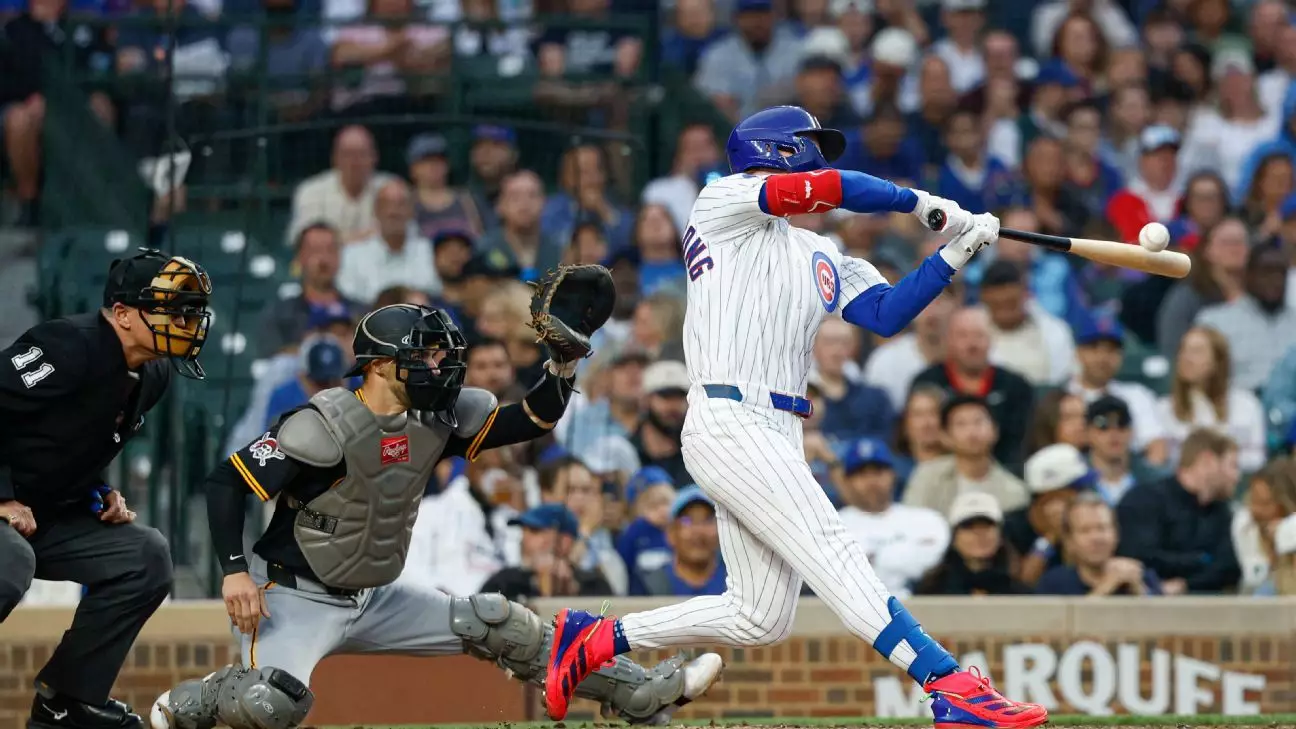Unstoppable Force: Pete Crow-Armstrong Redefines Hitting in MLB
Baseball has always been a game of precision, where technique reigns supreme. Yet, every once in a while, a player comes along who challenges these norms and forces us to rethink everything we know. Pete Crow-Armstrong of the Chicago Cubs is one such player, turning heads with his unconventional style. His recent home run against Pittsburgh Pirates pitcher Andrew Heaney was nothing short of extraordinary—a high fastball, 8.1 inches above the strike zone, sent soaring out of the park. This wasn’t just a lucky hit; it was a testament to his deep understanding of the game.
As someone who’s been following baseball for years, I find Crow-Armstrong’s approach both daring and refreshing. “I’m just committing to being on time for it,” he said after leading the Cubs to a 3-2 victory with his two-run blast. His ability to connect with pitches that most players would shy away from sets him apart in a league dominated by conventional hitters. What’s even more intriguing is his adaptability—he doesn’t just go for high pitches. He’s shown he’s capable of hitting balls in other less conventional spots too.
Key Takeaways
- Pete Crow-Armstrong’s unique hitting style defies traditional baseball techniques.
- His adaptability allows him to hit pitches in unconventional locations.
- A competitive spirit within the team enhances overall performance.
A Masterclass in Adaptability
Crow-Armstrong isn’t just about flashy moments; his stats back up his talent. With 18 home runs in just two months and 21 stolen bases, combined with gold-glove caliber defense, he’s proving he’s much more than a “bad ball hitter.” In an era where hitters typically avoid swings that defy traditional metrics, Crow-Armstrong is making a case for broader success measures at the plate. His performance suggests that success can be found beyond what many consider “good” pitches.

Seeing him adapt and excel has placed him high in the National League’s fWAR standings (wins above replacement). His skill at leveraging unorthodox pitch locations—such as hitting two out of five homers on pitches at least three inches below the zone—demonstrates not just skill but also an intuitive grasp of batting physics. His teammate Ryan Pressly humorously observed, “I don’t even know how to pitch Pete, to be honest with you.” This comment encapsulates Pete’s enigmatic prowess at the plate.
Competitive Spirit Within Team Dynamics
Crow-Armstrong’s individual brilliance is amplified by the competitive atmosphere within the Cubs lineup. Alongside teammate Seiya Suzuki, who trails him by just one home run this season with 17, there exists a healthy rivalry that propels both players—and ultimately, the team—to greater heights. Their camaraderie fosters an environment where each player pushes the other to excel, benefiting from this productive competition.

This synergy transforms what might otherwise be seen as individual pursuits into a collective effort toward team success. Crow-Armstrong aptly put it when he said, “What I’m doing is just contributing to the bigger picture,” highlighting his blend of personal achievement and team ethos driving the Cubs forward. It’s this mindset that builds champions—a team that functions as one unit rather than isolated stars.
The Future of Hitting in Major League Baseball
Crow-Armstrong represents more than impressive stats or personal accolades; he symbolizes a potential shift in MLB hitting strategies. By thriving outside conventional strike zone boundaries, he challenges existing player development methods and encourages young hitters to aim high while mastering unexpected opportunities. His approach prompts reconsideration and innovation in training programs across baseball.
As baseball continues its evolution, Crow-Armstrong’s ingenuity might inspire future players to rethink their strategies—emphasizing that extraordinary success often comes from embracing risk and redefining top-tier hitting. In a sport demanding constant adaptation and renewal, Crow-Armstrong stands testament to creativity, dedication, and unyielding ambition—a true embodiment of what it means to redefine success on your own terms.
Final Thoughts
Pete Crow-Armstrong’s journey through Major League Baseball presents an exciting narrative of innovation and adaptability that compels us to reconsider our understanding of effective hitting strategies. His ability to redefine what constitutes a good pitch challenges long-standing conventions and opens doors for new possibilities within the sport. As he continues to evolve his game, there’s no telling how many young players will follow suit.
Ultimately, Crow-Armstrong’s story is one of inspiration—a reminder that breaking away from tradition can lead to extraordinary achievements. For fans like you and me, witnessing such talent unfold is nothing short of exhilarating. Here’s hoping we see more players take risks like Pete does and redefine what it means to be successful in MLB.
MLB
Pete Crow-Armstrong
baseball
Chicago Cubs


Leave a Reply